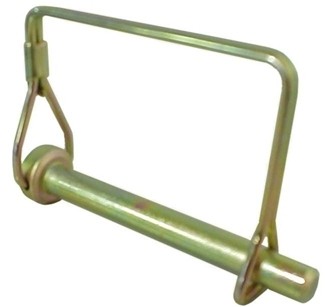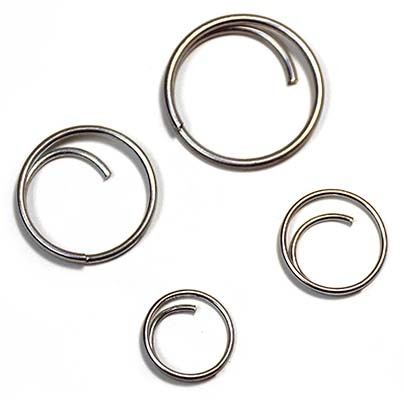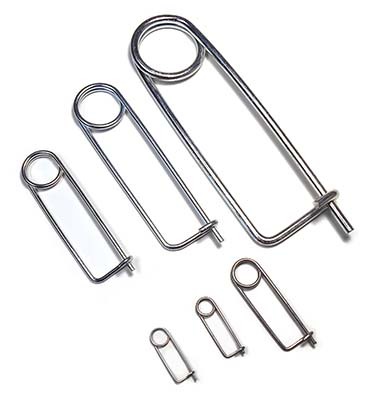- Good Sam Community
- Groups
- Motorhome Group
- Forum
- Re: Towed Car Comes Loose - A Plus For Auxiliary B...
- Subscribe to RSS Feed
- Mark Topic as New
- Mark Topic as Read
- Float this Topic for Current User
- Bookmark
- Subscribe
- Mute
- Printer Friendly Page
Towed Car Comes Loose - A Plus For Auxiliary Braking System
- Mark as New
- Bookmark
- Subscribe
- Mute
- Subscribe to RSS Feed
- Permalink
- Report Inappropriate Content
Oct-28-2016 10:36 PM
http://wheelingit.us/2016/10/28/our-first-rv-accident-tow-comes-loose-in-nc/
.... Back in S&B Again
Traveled 8 yr in a 40' 2004 Newmar Dutch Star Motorhome
& 8 yr in a 33' Travel Supreme 5th Wheel
- Labels:
-
Class A
- Mark as New
- Bookmark
- Subscribe
- Mute
- Subscribe to RSS Feed
- Permalink
- Report Inappropriate Content
Oct-30-2016 10:04 AM
rgatijnet1 wrote:
Some braking systems, like the Blue Ox Patriot system, will allow you to push a button on the dash of the MH to apply the toad brakes.
The OP's US Gear Unified brake system controller (on the dash of the rv or wherever the driver wanted to install it) does indeed has a lever on the front that allows you to manually and incrementally activate the toad's brakes without using the mh's brakes.
For the record, this supplemental brake system is one of the highest rated systems available today. :C
Ron
2013 Tiffin Phaeton 42LH Cummins ISL 400hp
Toad: 2011 GMC Terrain SLT2
Tow Bar: Sterling AT
Toad Brakes: Unified by U.S. Gear
TPMS: Pressure Pro
Member of: GS, FMCA, Allegro
RETIRED!! How sweet it is....
- Mark as New
- Bookmark
- Subscribe
- Mute
- Subscribe to RSS Feed
- Permalink
- Report Inappropriate Content
Oct-30-2016 09:22 AM
- Mark as New
- Bookmark
- Subscribe
- Mute
- Subscribe to RSS Feed
- Permalink
- Report Inappropriate Content
Oct-30-2016 08:37 AM
Chuck USNR, USAF & USCGA and Suzie
Challenger Owners Club
2015 Thor Challenger 37KT
2014 Ford Fiesta
2011 Sea Eagle 385 FT kayak
2009 Polaris RZR
2014 Zenetto Stealth road bike
- Mark as New
- Bookmark
- Subscribe
- Mute
- Subscribe to RSS Feed
- Permalink
- Report Inappropriate Content
Oct-30-2016 08:36 AM
With this adjustable system (US Gear Unified Brake System), you must find a happy medium on the adjustable control so that the toad's brakes won't be set so high that you will be dragging the brakes and conversely, not so low that the brakes will only be activated during a panic stop.......which maybe the OP's DH had done.
Ron
2013 Tiffin Phaeton 42LH Cummins ISL 400hp
Toad: 2011 GMC Terrain SLT2
Tow Bar: Sterling AT
Toad Brakes: Unified by U.S. Gear
TPMS: Pressure Pro
Member of: GS, FMCA, Allegro
RETIRED!! How sweet it is....
- Mark as New
- Bookmark
- Subscribe
- Mute
- Subscribe to RSS Feed
- Permalink
- Report Inappropriate Content
Oct-29-2016 07:27 PM

2006 Country Coach Inspire Genoa 40ft
- Mark as New
- Bookmark
- Subscribe
- Mute
- Subscribe to RSS Feed
- Permalink
- Report Inappropriate Content
Oct-29-2016 07:24 PM
My safety cables give only a couple of inches slack if one of those pins vanishes.
Why did the toad hit the MH? Shouldn't it be simultaneously braking?
- Mark as New
- Bookmark
- Subscribe
- Mute
- Subscribe to RSS Feed
- Permalink
- Report Inappropriate Content
Oct-29-2016 05:49 PM
wa8yxm wrote:Thanks for the explanation! I wasn't aware the two different parts were compatible. JohnJ-Rooster wrote:
I don't understand them using two different tow bar systems Blue Ox and Roadmaster together? And the cotter pin he shows? I don't use them (I've never trusted them) I use padlocks in the place of those pins.
Many people use either roadmaster tow bars with Blue ox base plates or the other way around. both companies make "Adapters" for selected base plates and/or are compatible up front.
The "Cotter Pin" is actually misnamed, that is called a "hair Pin" not a cotter pin... though they serve much the same function, Cotter pins would NOT have come out since you "Spread the legs" but cotter pins are not designed to be inserted and removed over and over again hair pins are.
I use spring clip pins there they have a curcular spring that is bi-stable (means it will rest in either of two position) we used these exclusively on the farm to hold the draw bar, plough, cultivator, mower and other 3-point hitch devices to the tractor and I've never had a problem with them.. I do not think they can come loose.
I used to use hair pins at the other end of the Tow bar however (Motor home end) till one came out exactly as described above and cost me around 2,000 in repairs, I now use either padlocks or pins you need to use TOOLS to remove. I do not trust the hair pins at all.
Page 2:
Padlocks v/s a "Quick Release" on the car end.
I have read of many a RV fire, even seen one (though that was a TT) and the faster I can disconnect the other vehicle (Towed in my case, Towing in the case of the TT) the less damage to the other vehicle.
In the case of the TT though it was the tow vehicle that went up. Some smoke damage to the trailer but nothing a good bath would not cure.
(Fire was already on scene when I drove past so I kept on trucking, he also had a friend with a 2nd tow vehicle so they could get him off the freeway w/o my help, I'm not rated to tow that much anyway)
I've also had a Tow vehicle that looked like it was on fire.. But was not. Turned out to be something easy to fix.. AAA tow and a new piece of transmission line and some fluid. (it was hot oil on a hot exhaust, lots and lots of smoke, and I mean LOTS of smoke, no fire though)
But I'm a firm believer in quick release in the event I need to quick release.
That said.. A second danger.. Some folks theorized the hair pin had been pulled as a prank when I lost my towed (Oh, the safety cables,, I always wondered "Will they hold" I now know.. they did) but due to some things I did not include above that would have been impossible, I thik I know how the pin got pulled, but of course can not prove anything... but it was an accident, not intentional. (I'd inspected the hitch a short time earlier no chance for anyone to pull the pin unless they were running very very fast)
- Mark as New
- Bookmark
- Subscribe
- Mute
- Subscribe to RSS Feed
- Permalink
- Report Inappropriate Content
Oct-29-2016 02:41 PM
- Mark as New
- Bookmark
- Subscribe
- Mute
- Subscribe to RSS Feed
- Permalink
- Report Inappropriate Content
Oct-29-2016 01:38 PM
There are 2 different styles of clevis pins. One that has a hole drilled through it for the pin clip and one that has a groove cut all the way around the pin for the clip to ride in.
Clevis pins and clevis pin clips have been used for dozens and dozens of years with very few incidents. A clevis pin with a hole for the clip is likely a bit more "robust".
The smallest diameter lynch pin I can find is 3/16" diameter which would require a fairly large hole in a 1/2" diameter clevis pin. More appropriate for a 3/4" hitch pin.
There are several different styles of clevis pin clips. Most of the others I have seen have positive locking but are formed out of thinner wire.
Circle cotter pin

Saftey Pin

- Mark as New
- Bookmark
- Subscribe
- Mute
- Subscribe to RSS Feed
- Permalink
- Report Inappropriate Content
Oct-29-2016 09:43 AM
01 31'Sea View single slide, F53 V-10 with 134,000 miles and counting.
2012 Jeep Liberty Smi brake system
Security by Bentley
God Bless
KF6HCH
- Mark as New
- Bookmark
- Subscribe
- Mute
- Subscribe to RSS Feed
- Permalink
- Report Inappropriate Content
Oct-29-2016 09:24 AM

I know these are the recommended pin, but I've already lost one of these, and I noticed another one had not snapped down tight the other day. I think they get dirty and the ring doesn't necessarily snap flush and because they are top heavy they roll down and just fall out. I'm partly to to blame for not checking well, I agree, but I like things to be a little more passive. I think I will just go straight to the padlock. At least on a padlock, even open it would stay in the pin.
I don't know that brake system he was using that well, but I am somewhat comforted that on my RVI2 I can manually apply the brakes on the toad and hopefully avoid the back slam. Not that I want to test my theory :), but I think it would work.
2013 Jeep Wrangler Unlimited Sahara Towed
- Mark as New
- Bookmark
- Subscribe
- Mute
- Subscribe to RSS Feed
- Permalink
- Report Inappropriate Content
Oct-29-2016 09:00 AM
lanerd wrote:
I also have the US Gear Unified supplemental brake system on my toad. As long as the driver kept his foot on the rv's brake, it would have activated the toad's brakes .....
The US gear system has a multiple activation method
Not only must you be using the RV's brakes (Brake lights ON) but with enough pressure to SLOW the RV for it is purportional and if you just gently press the brakes it will activate the vacuum pump but will not apply brakes
The Break away cable
A manual lever in the RV's cockpit,, This is the method I'd have used under these conditions...
You can also adjust "gain" (how hard the brakes are applied as a function of how Fast the Motor home is slowing down) turning the towed brakes OFF if needed.
This is somewhat more control than a Professional SEMI driver has over his trailer brakes (he can not adjust gain on the fly, but can either engage or disable them if needed).
Only US gear offers this level of control.
2005 Damon Intruder 377 Alas declared a total loss
after a semi "nicked" it. Still have the radios
Kenwood TS-2000, ICOM ID-5100, ID-51A+2, ID-880 REF030C most times
- Mark as New
- Bookmark
- Subscribe
- Mute
- Subscribe to RSS Feed
- Permalink
- Report Inappropriate Content
Oct-29-2016 08:56 AM
J-Rooster wrote:
I don't understand them using two different tow bar systems Blue Ox and Roadmaster together? And the cotter pin he shows? I don't use them (I've never trusted them) I use padlocks in the place of those pins.
Many people use either roadmaster tow bars with Blue ox base plates or the other way around. both companies make "Adapters" for selected base plates and/or are compatible up front.
The "Cotter Pin" is actually misnamed, that is called a "hair Pin" not a cotter pin... though they serve much the same function, Cotter pins would NOT have come out since you "Spread the legs" but cotter pins are not designed to be inserted and removed over and over again hair pins are.
I use spring clip pins there they have a curcular spring that is bi-stable (means it will rest in either of two position) we used these exclusively on the farm to hold the draw bar, plough, cultivator, mower and other 3-point hitch devices to the tractor and I've never had a problem with them.. I do not think they can come loose.
I used to use hair pins at the other end of the Tow bar however (Motor home end) till one came out exactly as described above and cost me around 2,000 in repairs, I now use either padlocks or pins you need to use TOOLS to remove. I do not trust the hair pins at all.
Page 2:
Padlocks v/s a "Quick Release" on the car end.
I have read of many a RV fire, even seen one (though that was a TT) and the faster I can disconnect the other vehicle (Towed in my case, Towing in the case of the TT) the less damage to the other vehicle.
In the case of the TT though it was the tow vehicle that went up. Some smoke damage to the trailer but nothing a good bath would not cure.
(Fire was already on scene when I drove past so I kept on trucking, he also had a friend with a 2nd tow vehicle so they could get him off the freeway w/o my help, I'm not rated to tow that much anyway)
I've also had a Tow vehicle that looked like it was on fire.. But was not. Turned out to be something easy to fix.. AAA tow and a new piece of transmission line and some fluid. (it was hot oil on a hot exhaust, lots and lots of smoke, and I mean LOTS of smoke, no fire though)
But I'm a firm believer in quick release in the event I need to quick release.
That said.. A second danger.. Some folks theorized the hair pin had been pulled as a prank when I lost my towed (Oh, the safety cables,, I always wondered "Will they hold" I now know.. they did) but due to some things I did not include above that would have been impossible, I thik I know how the pin got pulled, but of course can not prove anything... but it was an accident, not intentional. (I'd inspected the hitch a short time earlier no chance for anyone to pull the pin unless they were running very very fast)
2005 Damon Intruder 377 Alas declared a total loss
after a semi "nicked" it. Still have the radios
Kenwood TS-2000, ICOM ID-5100, ID-51A+2, ID-880 REF030C most times
- Mark as New
- Bookmark
- Subscribe
- Mute
- Subscribe to RSS Feed
- Permalink
- Report Inappropriate Content
Oct-29-2016 08:34 AM
2021 Nexus Viper 27V. Class B+
2019 Ford Ranger 4x4





